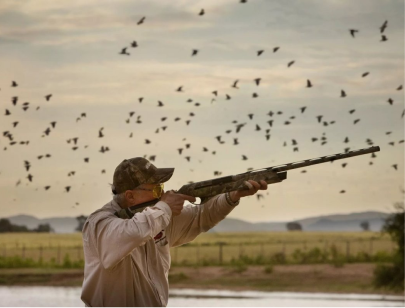
Cabo San Lucas, located at the southern tip of Mexico’s Baja California Peninsula, is renowned for its stunning beaches and world-class fishing opportunities. Among the prized catches for shore anglers are roosterfish and Jack Crevalle, known for their powerful fights and thrilling pursuit. To increase your chances of success when fishing from the shore in Cabo San Lucas, it is essential to understand the habits of these species, select the right gear, and employ effective techniques.
Understanding Roosterfish and Jack Crevalle



Rooster Fish (Nematistius pectoralis)
Roosterfish are easily identifiable by their distinctive, comb-like dorsal fin and are highly sought after by sport anglers. They inhabit the inshore waters of the Eastern Pacific, often found near sandy beaches, rocky shorelines, and reefs. Roosterfish are known for their aggressive behavior and powerful runs when hooked, making them an exhilarating target for shore fishing.
Jack Crevalle (Caranx hippos)
One of the reasons why data analysis can be misleading is when organizations measure the wrong things. While the data may seem comprehensive, it might not provide the complete picture. This often happens when companies focus on irrelevant metrics or only quantitative data, ignoring the qualitative aspects. For example, if you track the volume of tasks completed
Selecting the Right Gear
Rods and Reels
For shore fishing in Cabo San Lucas, a medium to heavy spinning rod paired with a high-capacity spinning reel is ideal. A rod length of 9 to 12 feet provides the necessary leverage and casting distance to reach feeding fish beyond the surf. Reels with a smooth drag system and a line capacity of 200-300 yards of 30-50 lb braided line are recommended to handle the long runs and sudden bursts of power characteristic of both roosterfish and Jack Crevalle.
Lines and Leaders
Braided line is preferred for its strength, sensitivity, and low diameter, which allows for longer casts. A fluorocarbon leader of 40-60 lb test is essential for its abrasion resistance and low visibility in clear waters. A leader length of 2-4 feet helps prevent break-offs when fish dart towards rocky structures or sandy bottoms.
Lures and Baits
Topwater lures such as poppers and surface walkers are highly effective for both species, as they mimic the movements of injured baitfish, triggering aggressive strikes. Additionally, swimbaits, jerkbaits, and metal spoons can be productive, especially when fish are feeding deeper. Live bait, such as mullet or sardines, can also be irresistible to both roosterfish and Jacks when rigged on a circle hook and allowed to swim naturally in the surf.
Techniques and Strategies
Timing and Location
Early morning and late afternoon are prime times for shore fishing, as roosterfish and Jack Crevalle are more active during these cooler periods. Tidal movements also play a crucial role; fishing an incoming or outgoing tide can enhance your chances as fish move inshore to feed.
Key locations include sandy beaches adjacent to rocky points, where waves create feeding lanes for predatory fish. Casting parallel to the shore or into channels between sandbars can also be effective, as these areas concentrate baitfish and attract larger predators.
Casting and Retrieval
Long, accurate casts are essential for reaching fish beyond the breakers. When using topwater lures, a fast, erratic retrieval can provoke explosive strikes from both roosterfish and Jack Crevalle. For subsurface lures, varying the speed and incorporating pauses can imitate a wounded baitfish, enticing fish to strike.
Fighting and Landing Fish
Once hooked, both species will put up a formidable fight. Maintain steady pressure and use the rod’s backbone to control the fish, avoiding overly tight drag settings that could lead to line breakage. Be prepared for sudden bursts of speed and changes in direction. When bringing the fish to shore, use the waves to your advantage, timing your efforts with incoming waves to safely beach the fish.
Conservation and Ethics
Practicing catch-and-release is essential to preserve these magnificent species for future generations. Use barbless hooks or crimp the barbs to minimize harm, and handle fish as little as possible, keeping them in the water as much as you can while unhooking. If you must lift a fish for a photo, support its weight properly to avoid internal injuries, and release it quickly to ensure its survival.
Conclusion
Fishing from shore in Cabo San Lucas for roosterfish and Jack Crevalle offers a thrilling and rewarding experience. By understanding the behavior of these fish, selecting appropriate gear, and employing effective techniques, anglers can increase their chances of success while enjoying the natural beauty of this renowned fishing destination. Remember to fish responsibly, respecting local regulations and conservation efforts to maintain the health and vitality of these prized game fish populations.


